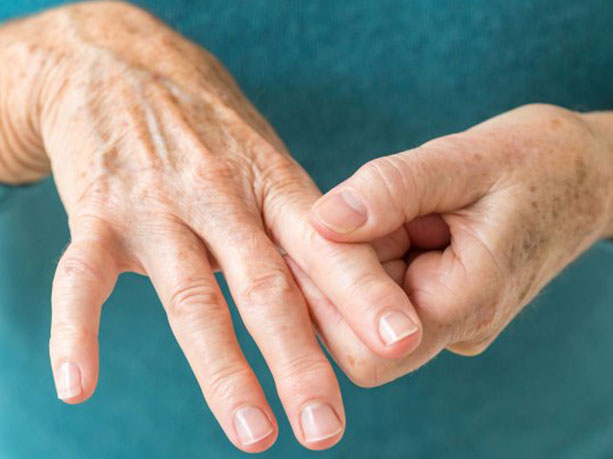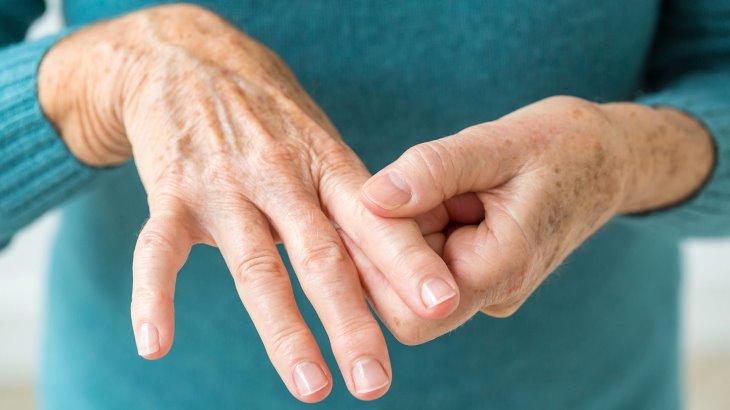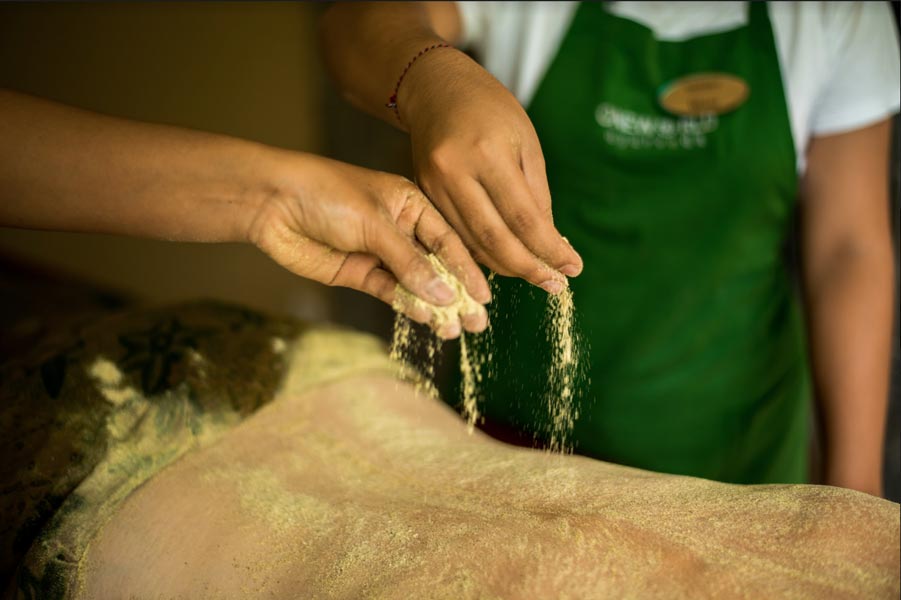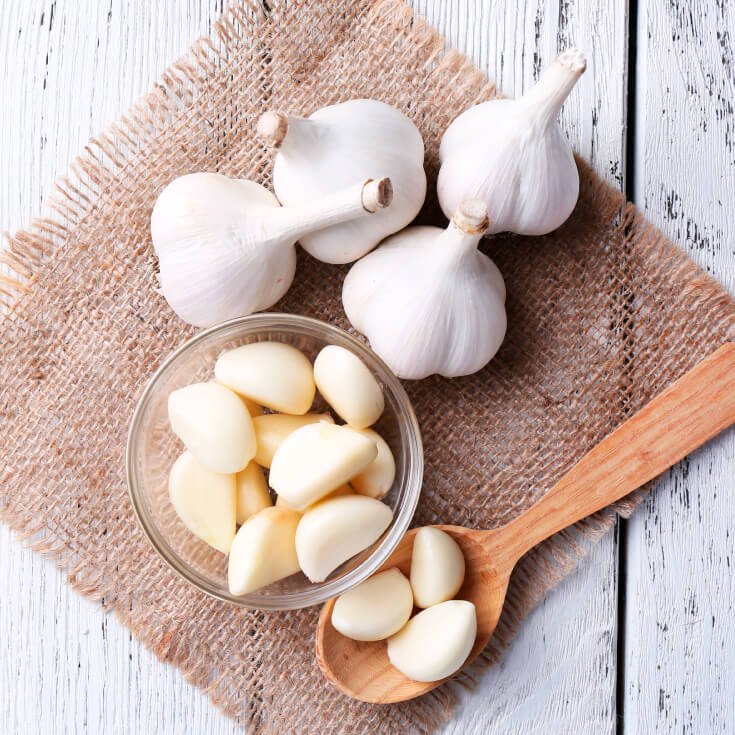
Rheumatoid Arthritis in Ayurveda
 (RA) is an autoimmune chronic inflammatory disorder causing pain, morning stiffness, swelling and redness among other things. As the disease progresses, the inflamed synovium invades and damages cartilage and bone of the joint. This potential of synovial inflammation causing cartilage destruction is the hallmark of the disease. RO can cause joints to deform and shift out of place and it can also affect other body parts as well (skin, eyes, heart, lungs etc).
(RA) is an autoimmune chronic inflammatory disorder causing pain, morning stiffness, swelling and redness among other things. As the disease progresses, the inflamed synovium invades and damages cartilage and bone of the joint. This potential of synovial inflammation causing cartilage destruction is the hallmark of the disease. RO can cause joints to deform and shift out of place and it can also affect other body parts as well (skin, eyes, heart, lungs etc).
RA cannot be traced back to one single disease in Ayurveda. According to Ayurveda, ama––the toxins produced in the body due to imbalance in body metabolism––circulates in the whole body and accumulates in the weaker joints, triggering the immune system to cause joint inflammation. In the long run, ama spreads to other tissues (dhatus) causing further damage in other body parts as well.
RA has varying signs and symptoms; its progression can have periods of increased activity but also those of remission. The main aim of Ayurveda’s management of rheumatoid arthritis is to arrest the progress of the disease and prevent onset of any abnormality. If the deformity has already set in, the aim is to reduce the pain and deformity.
Ayurvedic treatment
The holistic approach comprises diet modifications, lifestyle changes, stress management, herbal medications and treatments, yoga postures, pranayama and meditation. These can help the body get back to Homeostasis––state of balance and harmony–– and are effective for the majority of patients.
The treatments are judiciously administered after assessing the clinical condition.
The steps of Ayurveda management of RA include
- Correction of body metabolism by activating the digestive fire
- Removal of ama endotoxins
- Dietetic regimens and lifestyle changes
- Panchakarma: Detoxifying therapies followed by internal medications to reduce pain and joint inflammation
- Rasayana: Medications to improve immunity and joint stability
Panchakarma therapies that will be used are
- Vamana (Emesis)
- Virechana (Purgation)
- Vasthi (Enema)
- Nasyam (Nasal Administration).

These are often preceded by other preparatory therapies like dry powder massage, Dhanyamla dhara (pouring of a warm fermented liquid), herbal powder massage, poultices, lepa and others. They help remove the toxins and reduce pain, stiffness and inflammation.
The nature of the disease necessitates a long run treatment protocol with continuous internal medications and regular therapies. The patient needs to stay on rejuvenation therapy specific to the disease during the convalescence also.
Diet and lifestyle advice
- Increase intake of barley, red rice, millets, horse gram, mung beans.
- Eat more bitter vegetables like bottle gourd, bitter gourd, pointed gourd, eggplant, moringa, arugula, dandelion greens, radicchio and kale.
- Include spices like ginger, turmeric, celery seeds, cumin seeds and garlic in your diet.
- Drink lukewarm water or water boiled with ginger root.
- Avoid dairy, cauliflower, black lentils, chickpea, broccoli, potato, cabbage, and cashew nuts.
- Minimize consuming caffeine, tea, alcohol, and smoking.
- Minimize eating bacon/pork, beef, and chicken.
- Avoid heavy, greasy, creamy, and oily foods.
- Avoid waking up late in the night, sleeping during the day, and being directly exposed to cold winds.
- Strictly avoid oil massages, dry powder massages are advised.

Home remedies
- Two garlic cloves with two ounces of buttermilk is an excellent daily drink.
- Mix a tablespoon of castor oil into a glass of milk and take it at bedtime. Be forewarned, loose stools may naturally result from taking castor oil.
- Ginger, clove, and cumin mixed in equal parts can be made into a tea and drank twice daily.
- Fast for an entire day; either absolutely taking no food or relying on a liquid or semi-solid diet, depending on your strength. You can enhance this with hot fomentation (application of moist heat). This can be done by soaking a cloth in warm water and making a compress over the affected parts, by a steam bath, or by taking a bath with lukewarm water. These are the best methods of digesting ama.
- A paste of 10g ginger and 20g cumin mixed with 30g horse gram (moth bean) made into a paste with lemon juice can be applied on inflamed joints.

Aparna K. BAMS, MD, PhD
Aparna is one of the few specialists worldwide with a PhD in Ayurveda. Born into an Ayurvedic family which operates a traditional Ayurvedic Panchakarma hospital in Kerala, India, she grew up observing her father, the renowned Dr Padmanabhan.


Leave a Reply